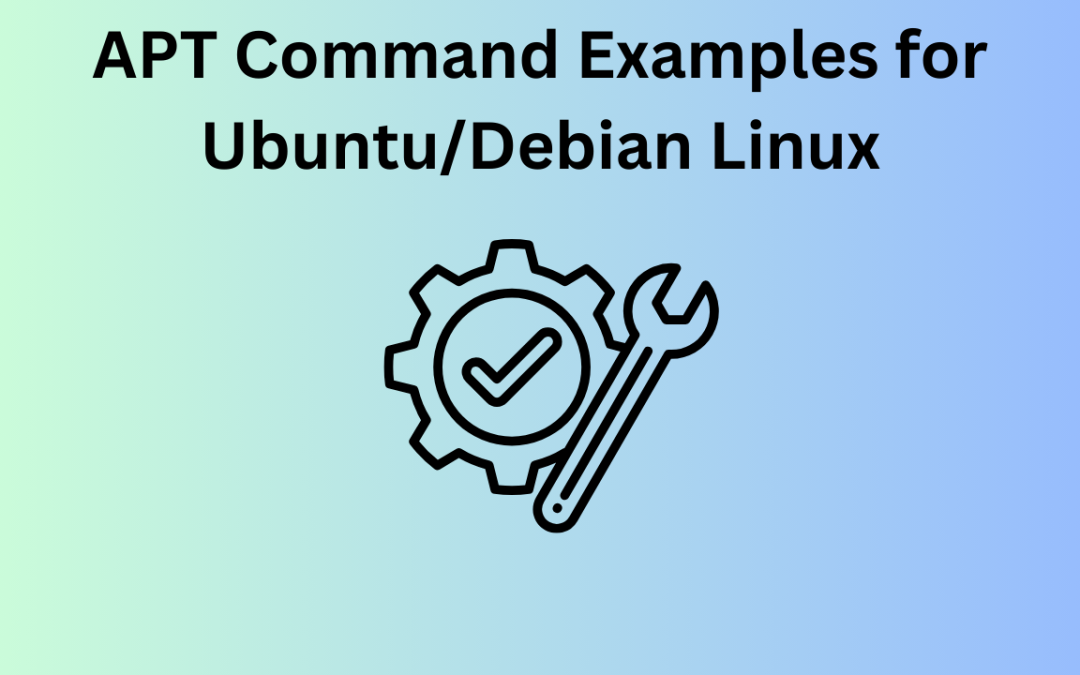The apt command-line utility is one of the most essential tools for managing packages in Ubuntu and Debian-based systems. It simplifies the process of searching for, installing, updating, and removing software packages. Below, we’ll explore some practical apt command examples to help you efficiently manage your Linux system.
1. Update Package Lists
Before installing or upgrading packages, it’s good practice to update the local package index to ensure you’re using the latest available versions:

sudo apt update
This command fetches the latest package information from the repositories listed in /etc/apt/sources.list.
2. Upgrade Installed Packages
To upgrade all installed packages to their latest versions, run:
sudo apt upgrade
For a more thorough upgrade, which might remove some packages or install new dependencies, use:

sudo apt full-upgrade
3. Search for a Package
If you’re unsure about the exact package name, you can search for it:

apt search <package_name>
For example:
apt search apache2
This will display a list of packages related to apache2.
4. Install a Package
To install a specific package, use:

sudo apt install <package_name>
Example:
sudo apt install vim
This command installs the vim text editor.
5. Show Package Details
To view detailed information about a package, including its description, dependencies, and version, use:

apt show <package_name>
Example:
apt show curl
6. Remove a Package
To uninstall a package but keep its configuration files, run:

sudo apt remove <package_name>
To completely remove a package along with its configuration files:
sudo apt purge <package_name>
7. List Installed Packages
To list all installed packages on your system, use:

apt list --installed
You can also filter the output for a specific package:
apt list --installed | grep <package_name>
8. Check for Upgradable Packages
To see which installed packages have updates available:
apt list --upgradable
9. Download a Package Without Installing
If you only want to download a package without installing it, use:

apt download <package_name>
This saves the package file in the current directory.
10. Clean Up Unused Packages
To remove packages that were automatically installed and are no longer needed:
sudo apt autoremove
To clean up the local repository of retrieved package files:
sudo apt clean
11. Upgrade the Distribution
For upgrading your system to a newer release of Ubuntu/Debian:
sudo apt dist-upgrade
This command handles package conflicts intelligently by installing or removing packages as necessary.
12. Fix Broken Packages
If a package installation fails due to missing dependencies, fix it using:

sudo apt --fix-broken install
13. Add a Repository
To add a new repository to your system, first use the add-apt-repository command:
sudo add-apt-repository <repository_name>
Example:
sudo add-apt-repository ppa:graphics-drivers/ppa
Then update the package list:
sudo apt update
14. Get Help
To see a list of available commands and options for apt:
apt --help
Conclusion
The apt command is an indispensable tool for package management in Ubuntu and Debian-based systems. With these examples, you can efficiently handle software installation, updates, and maintenance. Whether you’re a beginner or an experienced user, mastering these commands will make managing your Linux system much easier.



